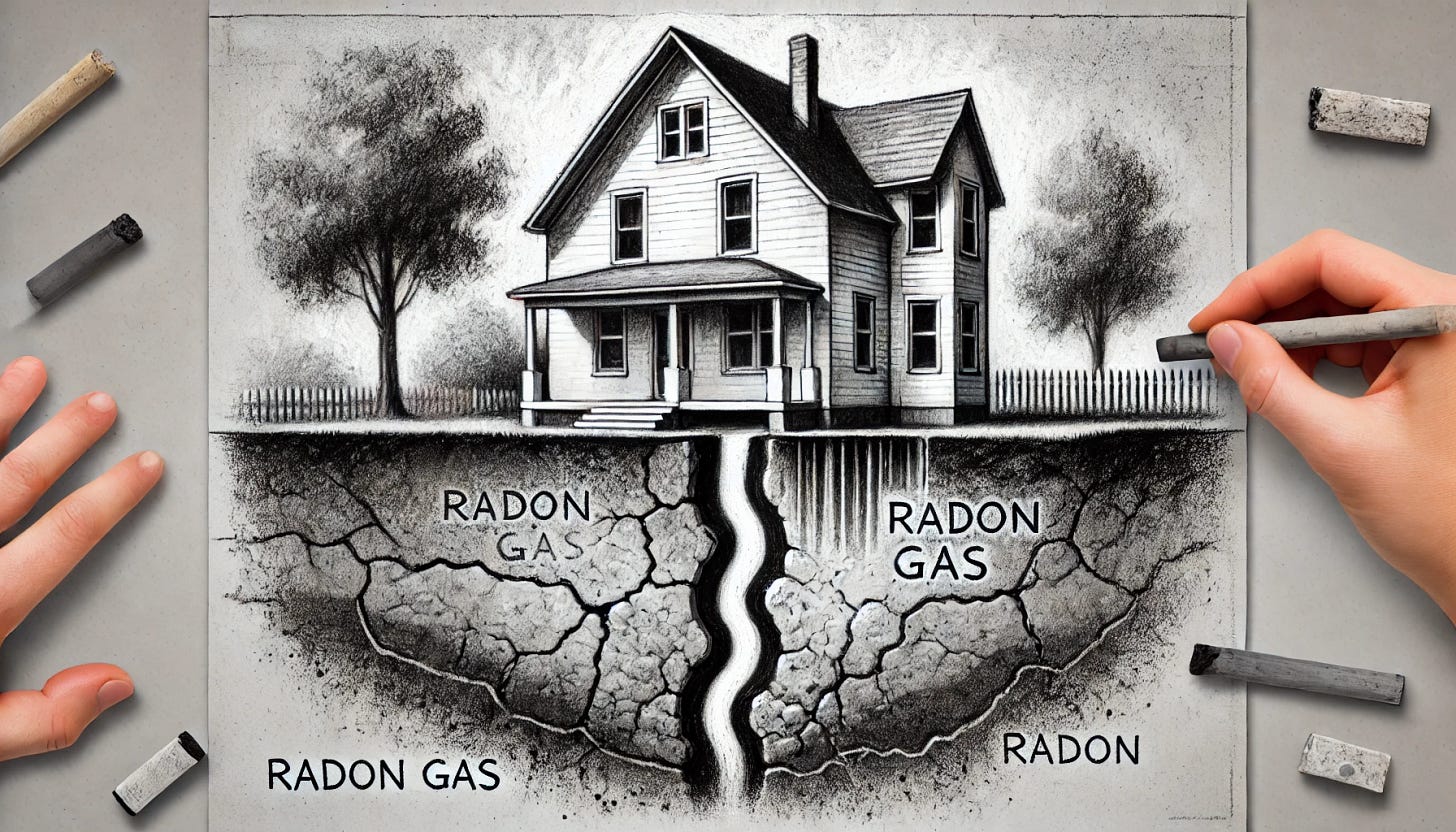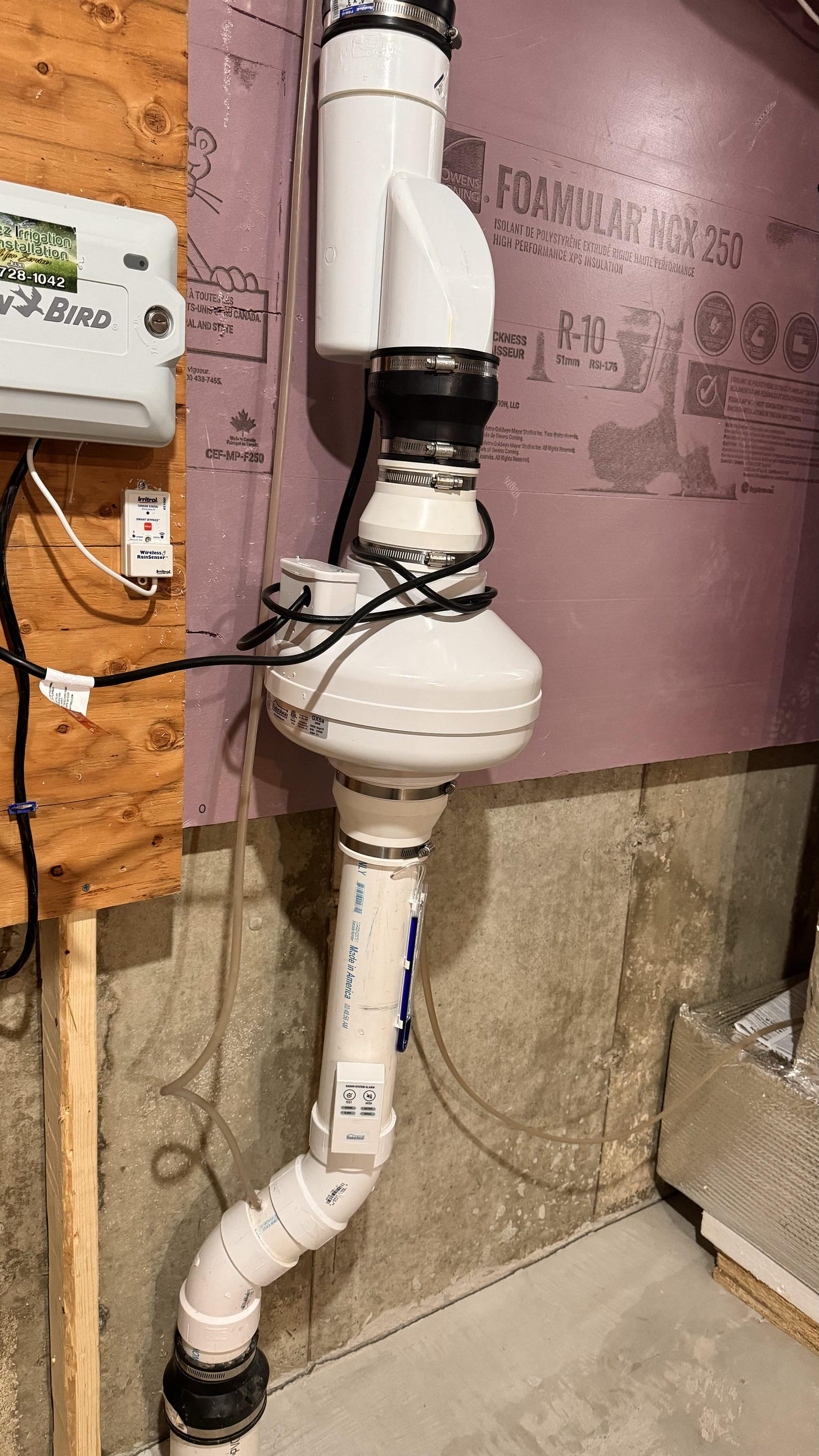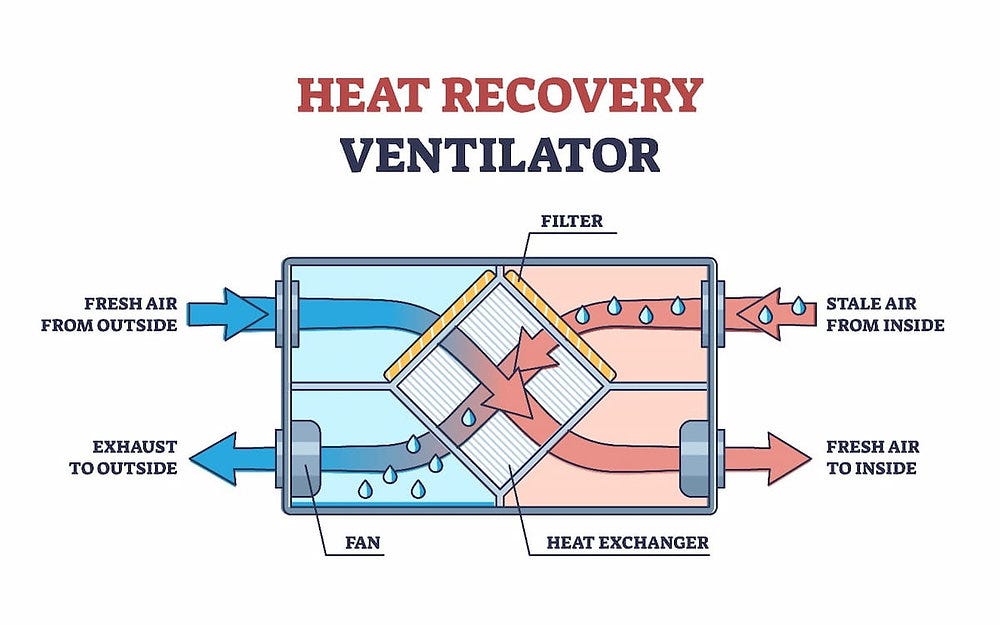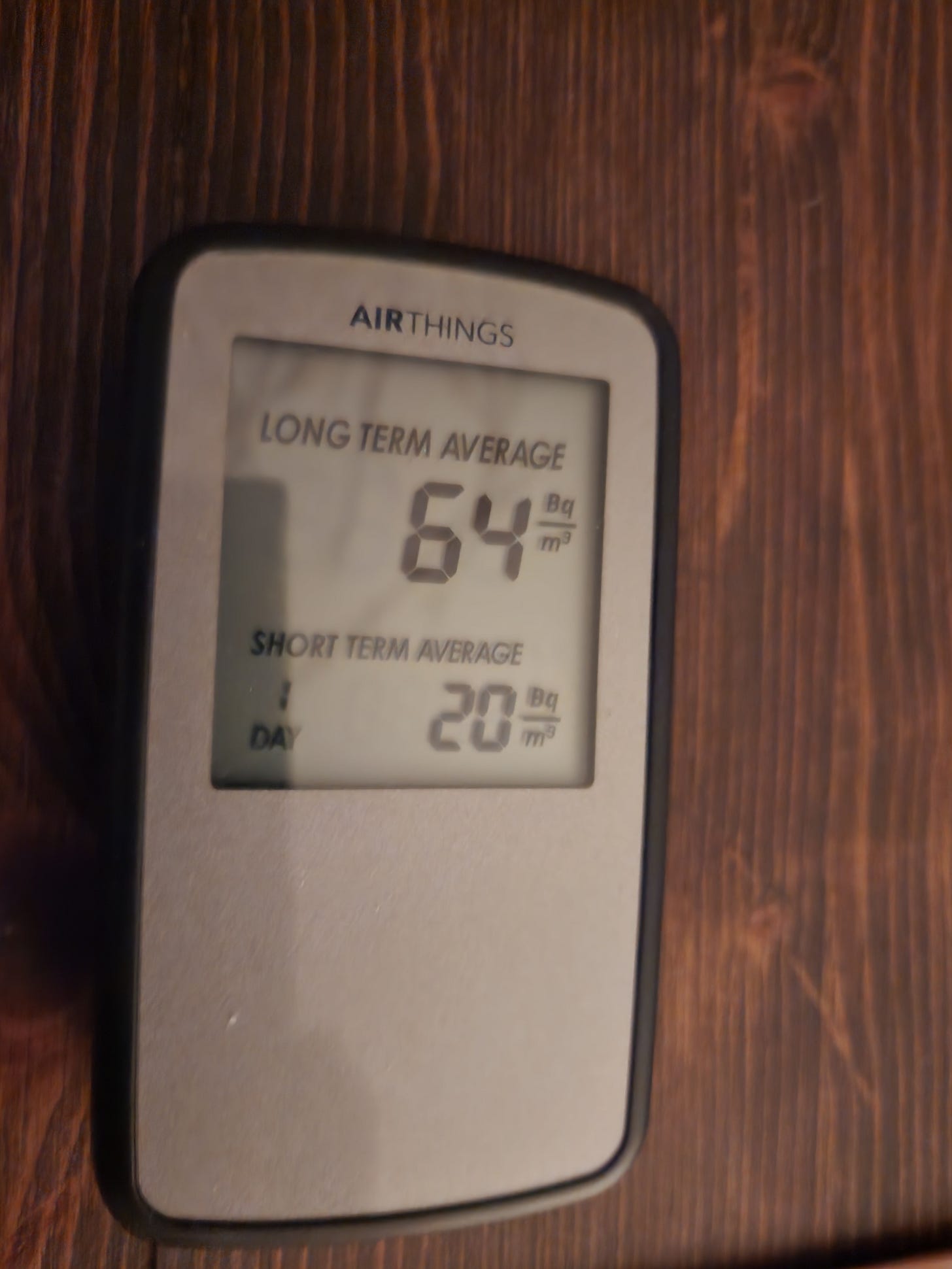Radon Gas
The Hidden Threat Beneath Your Home
🛠️The Hidden Threat Beneath Your Home
You don’t know what you don’t know and What you don’t know can be dangerous.
Radon gas is a naturally occurring, colorless, odorless radioactive gas formed from the decay of uranium in soil, rock, and water.
What is Radon Gas?
It can seep into homes through cracks in foundations, gaps around pipes, and other openings. Prolonged exposure to high levels of radon is the second leading cause of lung cancer, making it a significant health concern.
Below is a map of North American States, Provinces and their relative levels of exposure.
Apparently North America has a metric shit ton of Uranium kicking around underground.
A Sudden Realization
A lot of my most valuable thoughts come to me during sleep or just before I wake. I was awoken the other night with a deep dread about Radon Gas.
Strange? Maybe. But I decided to act on it the very next day.
Testing for Radon
I purchased an Airthings Corentium Home Radon Monitor after some quick research. It’s a sleek device that promises reliable readings. After powering it on and letting it run overnight, the initial reading revealed levels above the recommended safety threshold.
Alpha Particles
I wanted to gain some intuition as to what these numbers meant to the human body.
A common Radon measurement device is this puck pictured below. Inside is a polycarbonate sheet - which is effectively hardened plastic. They leave this puck in the house for say 3 months then send it off to a lab to test. The test takes out the polycarbonate sheet and puts it under a high powered microscope. Software drives the microscope to scan the sheet and count the number of dents on the hardened plastic.
Alpha particles from Radon decay physically dent the hardened plastic. Crazy!
This same process happens to your lungs every second.
The measurement of the Airthings Corentium device - its units are expressed in Bq/m3 or becquerels per cubic meter (picocuries per liter (pCi/L) for US models). This is a unit of radioactivity concentration in a given volume, commonly used in fields like radiation protection and environmental monitoring. A Becquerel represents one radioactive decay (disintegration) per second.
If an Alpha particle is released in your lungs, the same thing that dents polycarbonate, it can to smack into your DNA causing cellar damage
Radon half life is ~3.8 days
My Corentium tool measures at Bq/m3
Male lung capacity is ~1% of m3
At a reading of 200 on the reader
365 days in the year * 86400 seconds per day * (1% of 200) 2 = 63,072,000 Alpha particle impacts per year
Country Thresholds
USA: 148 Bq/m3 (4 pCi/L)
Canada: 200 Bq/m3
UK: 200 Bq/m3
Australia: 200 Bq/m3
*residential and commercial thresholds are different
Mitigating the Risk
I’m personally quite a risk mitigator by nature. So my next steps are likely to get the house fixed with an expert team. Here’s what I’ve learned about radon mitigation so far:
How Radon Enters Homes: Radon gas creeps into a house through all of the cracks and gaps in the basement. On modern North American homes the gas would spread through the house naturally and through the HVAC system.
How Mitigation Works: The standard fix involves installing a vent pipe beneath the house, capped in the basement. This pipe is connected to a quiet fan that creates lower pressure inside the pipe than in the surrounding soil. This negative pressure draws harmful gases out before they seep indoors.
Sealing Cracks and Gaps: Any accessible cracks, holes, or sumps are sealed to create as airtight a barrier as possible.
Alternative Solution: If installing a radon fan is not possible, the next best option is a Heat Recovery Ventilator (HRV) system. This device exchanges stale indoor air with fresh outdoor air, diluting any radon-contaminated air.
Potential Issues with HRV Systems
Interestingly, I already have an HRV system installed. However, there’s a catch: improper installation or poor pressurization can actually make the problem worse. If the house pressure is lower than the surrounding soil pressure, it can inadvertently draw in more radon gas.
I’ll monitor my radon levels for a week to gather data, but I suspect I’ll end up spending around $2,000 to resolve the issue properly. Peace of mind is worth the investment.
Final Thoughts
If you haven’t checked for radon gas I’d recommend getting a device to at least know what your personal situation is. From what I can tell every house is different based off the soil underneath, cracks, year of construction, location of build and so on.
Post Mitigation
After having my system installed here is a picture of my Short Term numbers after running the HRV System for 24 hours.
Less than 8% of the original value











The irony of Radon gas is it's danger is exacerbated in modern homes, owing to the obsession with "fighting climate change" group think. Because of this, to be more energy efficient modern homes use construction techniques that make them more airtight.
Homes built before the 1980's were built so they would ventilate more naturally, because it's been known for centuries that that is the way to build healthy habitable spaces.
After the energy shock of the 1970's, building designs made houses air tight pockets that recirculated heated air to conserve energy.
This saved energy, but didn't factor in the health hazards of doing so.
The most obvious one being that by recirculating air, people get respiratory illnesses more often, hence why the flu / cold season corresponds perfectly with the time when people enter their little heat bubbles in the fall / winter.
At the same time, moisture also gets recirculated, which in excess leads to mold growth, which further exacerbates respiratory diseases, as well as allergens which cause asthma and reduced immunity.
Lastly, as your article points out, it also traps radioactive radon gas from beneath your houses foundation.
A few years ago, when I moved into my basement suite, I was really worried about radon, and tested it myself. I was in the low 70's Bq/m3 most of the time and would spike to the 100's if I closed all the windows.
The funny take away with this is that in our society's obsession to get "the latest and greatest" with whatever is trending, we overlook or forget knowledge and wisdom that are intrinsic and self evident with the relics of the past.
This loss of wisdom and intellect then creates new problems with newest and best which causes regressions in the quality of life of everyone consume that which is new.
It's interesting how before, when I used to live in a house built in in the 2000's, my health and the health of my children was terrible, but after moving back to a house built in the 1970's, we have never been healthier.